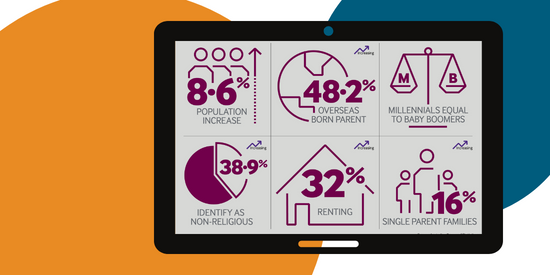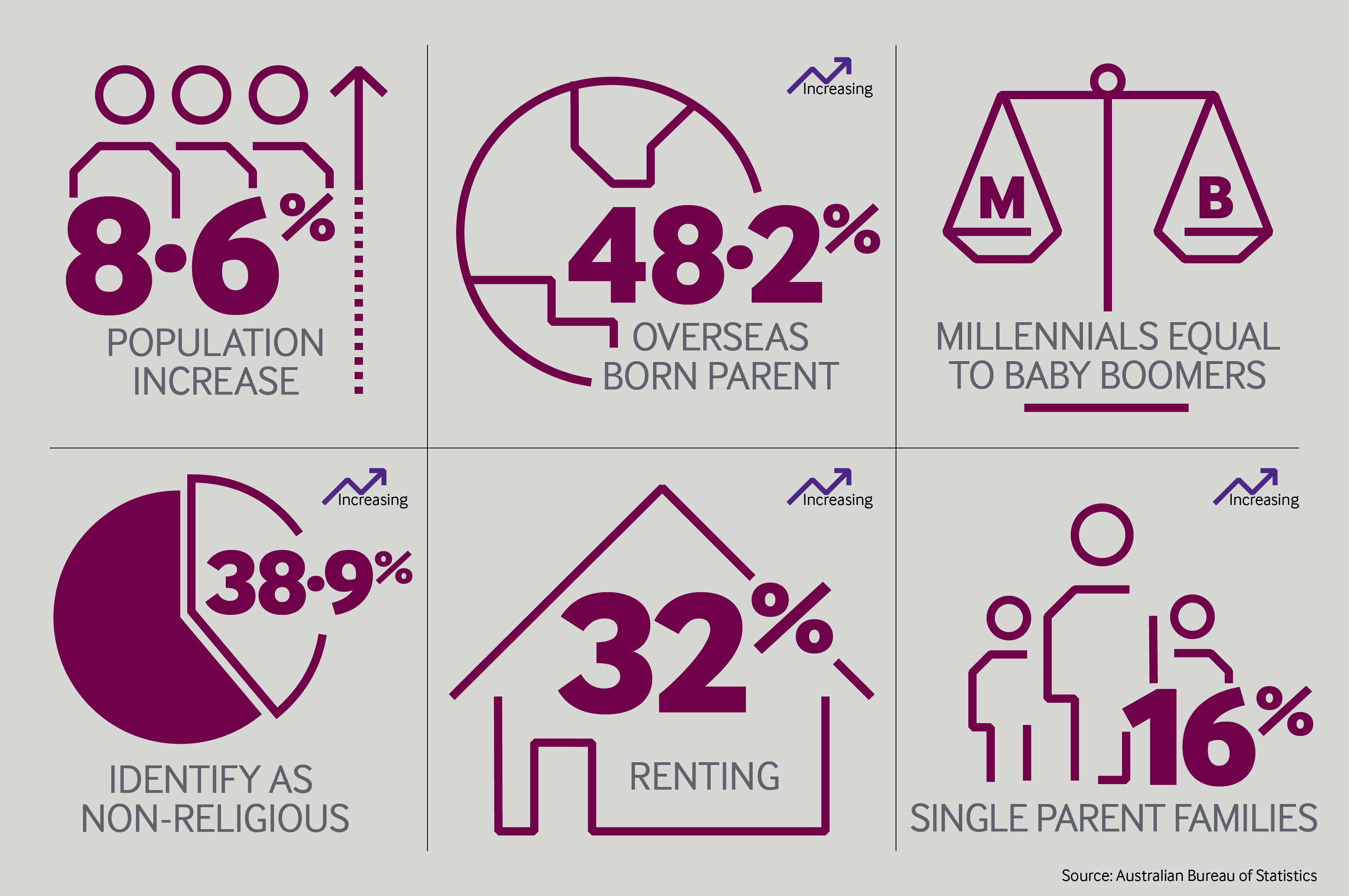Engaging with the new Australia

With Ai-Lin Chang and Kate Eskdale | RPS Group
It doesn’t take a rocket scientist to know that society is changing.
But what does the latest Census tell us about the new Australia and the future of engagement?
The typical Australian is more diverse, non-religious and more likely to belong to a one parent family than ever before. So, the days of running a few community drop-in sessions where the usual suspects turn up are over. At least they should be if we really want to understand what millennials, migrants and one parent families − typical Australians – really think.
The challenge for engagement practitioners? Changing our approach to ensure our processes are representative, and reflect the increasingly diverse preferences of Australians in sharing their views.
A lesson learned all too well by politicians the world over is that you ignore the silent majority at your peril. It’s not just the Boomers that we need to hear from in our engagement anymore.
We need a layered, nuanced and inclusive engagement approach.
The early bird gets the worm
The temptation is to wait until you have detailed information about a project or initiative to start engagement conversations with local communities and stakeholders. But we need to start building relationships and trust earlier if we want projects to leave a lasting, positive legacy.
As practitioners, we should approach engaging with any new community the same way that we would approach building a relationship with a new friend or colleague. Trust takes time and is built on the back of honest, consistent communication.
Listening is the key to any lasting relationship. We need to take the time to understand what is important to people, what their experiences have been and most critically, the best way to engage them.
Starting the conversation earlier gives all parties time to develop a much deeper understanding of perspectives, considerations and constraints – their own and others.
It also gives people who haven’t been involved with community engagement processes before more time and capacity to participate – learning how to get involved and why. This is especially important with young and culturally and linguistically diverse Australians.
Data is king
The era of one-size-fits-all communications is over. Targeted engagement approaches are here to stay.
Who are our new communities though? As wonderful and comprehensive as Census data is, there’s a trap in only using demographic data to inform our understanding.
We need to consider previous engagement results, movement data, social research and past engagement experiences (especially if they were bad), along with any other relevant quantitative or qualitative datasets.
This data must be contextualised with the myriad of socio-economic, cultural, linguistic and political factors that influence a community. And this is just the starting point to inform our engagement practice.
A community’s preferred engagement approach may not seem obvious at first glance. We must ask.
A prime example of this is the common assumption that all Indian Australian communities would prefer to undertake engagement in Hindi. This assumption misses the nuance of the different ethnic and linguistic groups within the Indian diaspora, and the high levels of English-based education that occurs across the population. It also minimises the importance that shared cultural identity has in delivering effective engagement with diverse populations.
As our world radically changes, new technology emerges and perceptions shift, it is natural that community preferences will change over time.
Using data to better understand your community and how to engage them seems straight forward on the surface. On deeper inspection, these questions are often much more complex to answer but also create exciting opportunities to advance our engagement standards.
Knocking down the barriers
We need to facilitate engagement processes that meet our community’s preferences and needs. Doing so will vastly improve rates of participation and result in more representative, balanced views that can help us make better project decisions.
But this requires a major cultural shift. How do we create it?
For starters, we must begin viewing communities as the engagement experts. Where possible, we need to let them lead their own engagement processes.
After a bit of a rocky start this was deployed to great effectiveness during the COVID-19 pandemic in Australia. Using well-funded, co-designed advertising campaigns developed by culturally diverse community members to promote critical health and vaccination information to their communities, and having respected local leaders operate as the key information source on COVID-19 between communities and government were amongst some of the most successful engagement methods during this time.
We also need to make much more of an effort to remove the logistical barriers that prevent everyday people from participating.
Why would a single mother experiencing financial disadvantage go to an in-person community engagement event if she’s juggling two jobs, doesn’t own a car and the event is the same night as her child’s yearly school concert?
To make engagement opportunities accessible to everyone, we must address the web of circumstances that prohibit participation. This ranges from providing in-person and online options for all engagement activities, ensuring the date, time and location of in-person activities are appropriate, to providing stipends for transport and technology, and using recruitment tools including paid participation.
The silence is deafening
With a changing and increasingly diverse Australia, it’s not good enough to say ‘we heard’ from the community when we really only heard from the loudest, most motivated voices.
We must change our engagement practices to hear from those who have traditionally been silent or ignored.
Evidence-based decision making has become a standard expectation – and we will need to demonstrate that meaningful engagement was undertaken with a representative segment of the community.
An IAP2 core value is that engagement practitioners must seek input from participants to design how they want to participate. In this new Australia, we need to embody this value more than ever.

